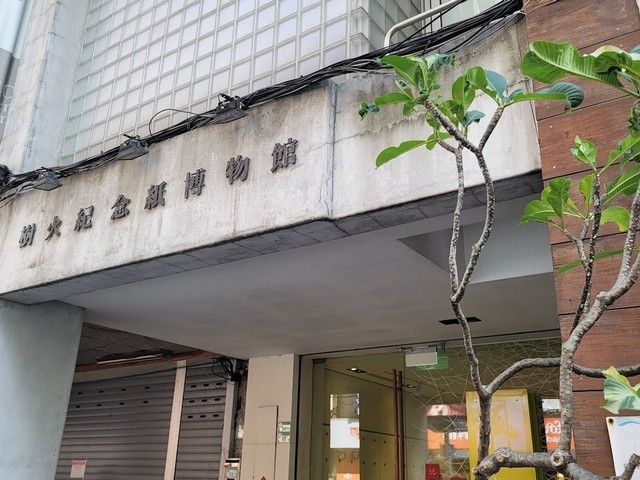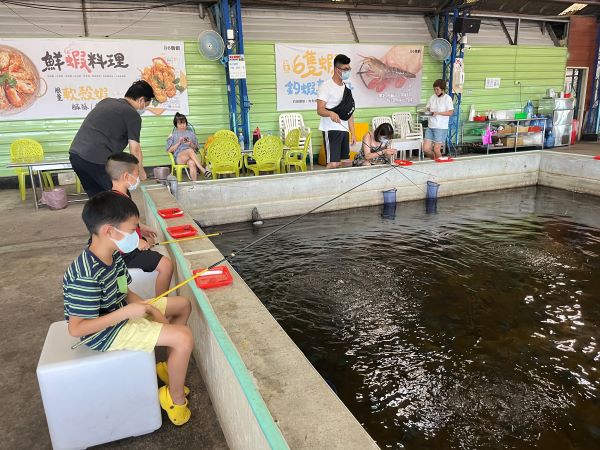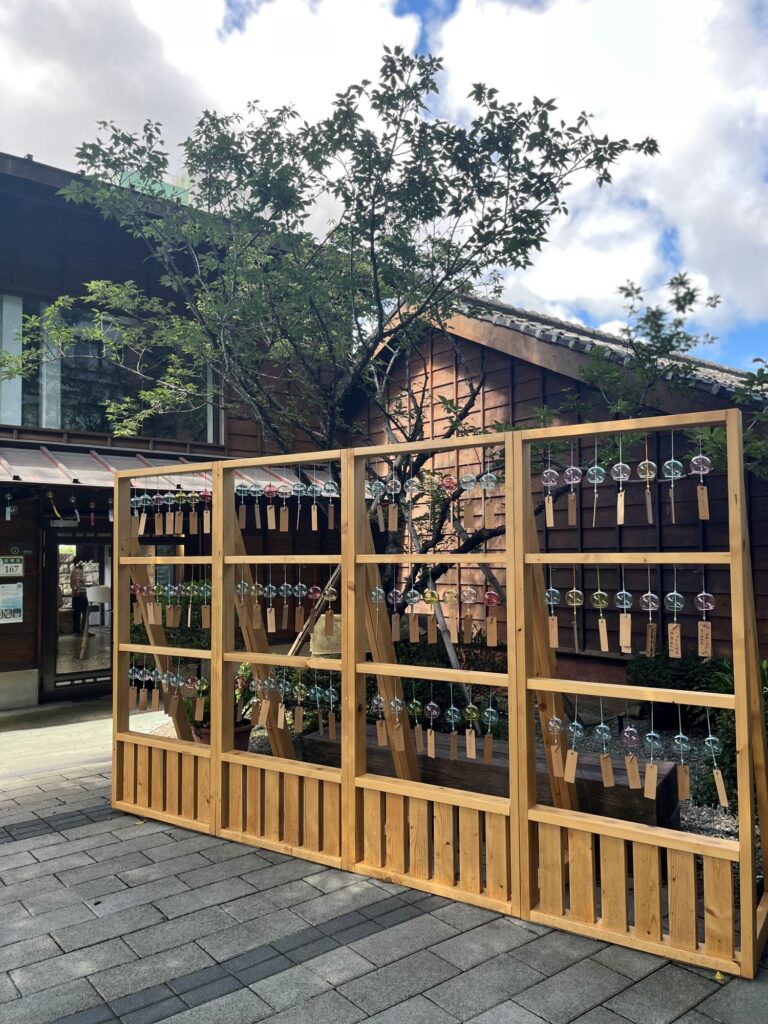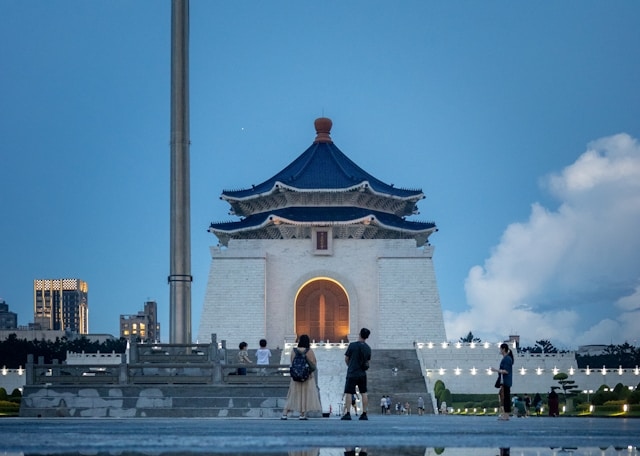Dadaocheng & Dihua Street : History, Architectures, What To Eat And Do…(迪化街&大稻埕碼頭)
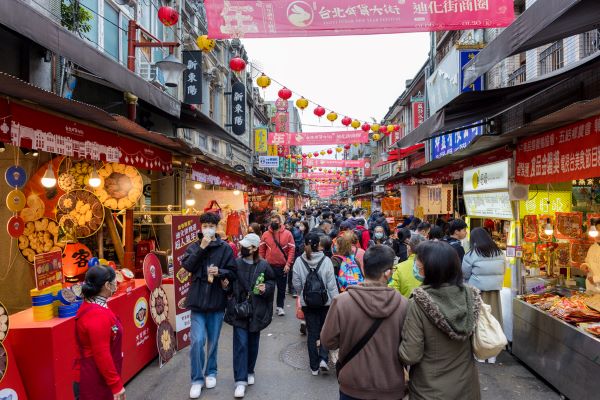
If you are looking for a mix of Taipei’s rich history and modern charm, a visit to Dadaocheng Wharf and Dihua Street is a must.
When I was a child, Dihua Street was where my parents would shop for dried goods before Lunar New Year. It was where we stocked up on dried foods such as mushrooms, abalone, jellyfish, scallops, and many more. We’d also pick out traditional treats like candied plums (話梅) and dates (紅棗) to prepare for the festivities.
Over the years, Dihua Street has transformed into a vibrant destination that seamlessly blends old traditions with modern charm. Many shops have undergone renovations, and new shops and cafés have opened, attracting younger crowds while still preserving the area’s historical character.
Just a short walk away, the Dadaocheng Wharf (大稻埕碼頭)has also undergone a transformation. Once a working dock, it’s now a beautiful riverside spot where visitors can enjoy stunning sunsets, grab a drink, or have a quick meal. The summer fireworks at the wharf attract large crowds, making it a lively and festive experience.
In this post, I’ll share everything you need to know about Dadaocheng and Dihua Street—from its rich history to iconic architecture designs to where to eat and shop when you explore this unique area.
Please read on.
A Brief History of Dadaocheng (大稻埕)
Dadaocheng (大稻埕) is a historic locality in the southwestern part of Datong District, Taipei City. The name comes from the “large open spaces for drying harvested rice”. It is one of the most historic areas of Taipei, with roots dating back over 150 years to the Qing Dynasty.
During the mid-19th century, Dadaocheng became a vital hub for trade and commerce, particularly for tea exports. The area grew as foreign merchants arrived in Taipei to buy Taiwan’s high-quality oolong tea, which was shipped worldwide.
Located in the heart of Dadaocheng, Dihua Street (迪化街) was a central marketplace for dried goods, Chinese medicine, and textiles. It became a key trading point for both local residents and merchants from other parts of Taiwan.
Even today, it remains the go-to spot for traditional dried goods, especially during Lunar New Year preparations.

Dadaocheng Wharf, which lies along the Tamsui River, was once a bustling shipping dock. In addition to textiles and tea, the wharf was also an important port for shipping rice, charcoal, and construction materials along the Tamsui River.
As Taipei modernized, the area’s importance as a shipping center diminished, but the wharf has been revitalized in recent years. It now serves as a scenic riverside promenade, perfect for leisurely walks, cycling, and enjoying sunset views.
How To Get There
Depending on the direction you are coming from, the closest MRT stations are:
- Beimen Station (北門站R10) – Take the Tamsui-Xinyi Line (Red Line) to Beimen Station. From Exit 3, it’s about a 10-minute walk to Dihua Street.
- Shuanglian Station (雙連站R12) – If you’re on the Tamsui-Xinyi Line (Red Line), you can also get off at Shuanglian Station. From Exit 2, walk along Minsheng West Road for about 12 minutes to reach Dihua Street.
- Daqiaotou Station (大橋頭站G15) – If you’re on the Songshan-Xindian Line (Green Line), get off at Daqiaotou Station. From Exit 1, it’s a 10-minute walk to the northern end of Dihua Street.
Things To Do
Explore The Architectures Of Dihua Street
As you stroll through the area, take a moment to notice the buildings around you. See how the narrow street is lined with long, slender shophouses. They were designed this way to maximize storefront space.
The oldest buildings are Southern Fujian-style (閩南式), with single-story layouts, sloped tiled roofs, and wooden doors and windows. They were built in the mid-19th century and are concentrated in the northern section of the street. You will find distinctive features such as the “tīng-á-kha” (亭仔腳, covered walkways) and carved wooden windows.
Here is an example of the Southern Fujian style structure. This is a shop that sells incents and worship papers. See it on Google Maps.

You’ll also see some Western-style (洋樓式) buildings inspired by 19th-century colonial influences, featuring two-story facades with decorative parapets, arched windows, and balustrades. A standout is the 仿巴洛克 (Neo-Baroque style), known for its elaborate carvings, floral motifs, and grand facades.
In addition, the Modernist-style (現代主義式) structures, scattered throughout the street, focus on clean lines and balanced proportions, reflecting the mid-20th century’s embrace of simplicity and functionality.


Retro Custome Dress-Up Experience
At the Dadaocheng Visitor Center (Google Maps), you can participate in a retro costume dress-up experience.
This unique activity allows you to wear traditional Taiwanese attire, such as the elegant qipao (旗袍) for women and the classic changshan (長衫)for men. After dressing up, you can take photos in the studios in the building.
You need to reserve your spot through the official reservation system. Since the experience is free (with a refundable deposit of NT$1,000), reservations can be hard to come by. I recommend checking the availability frequently and acting quickly when a spot opens up.
My good friend Carrie was able to get us a reservation and we had a wonderful time on a hot summer afternoon in 2023!

In addition to this free option at the Visitor Center, there is a paid option for costume dress-up experience at a private qipao shop. Click here for more details.
Explore Yongle Market (永樂市場)
Right across the street from the Dadaocheng Visitor Center, Yongle Market was established during the early 20th century, when the Dadaocheng area was a thriving center of commerce.
The market was famous for its vast selection of fabrics and textiles and attracted merchants and traders from all over Taiwan. For decades, it was the go-to destination for high-quality cloth, sewing materials, and traditional textiles. This made the market a key hub for local industries like tailoring and garment making.
The market was renovated in the 1980s and is now a 4-story building.
Inside, the second and third floors are dedicated to fabric shops, offering a wide variety of materials for all kinds of projects. On the third floor, you’ll also find professional tailoring studios, where you can purchase fabric downstairs and have it custom-fitted on-site.
The first floor is where the produce market is. You will also find food stalls, many of them have been around for 2-3 generations.
We had our late lunch at the famous Wanlong Raw Fish Shop (丸隆生魚行)on the first floor of the market and the seafood was fresh and delicious! You may check out more photos of their food on Google Maps.


Taipei Xia-Hai City God Temple (台北霞海城隍廟)
Built in the 1850s, this temple is dedicated to the City God (城隍), who protects the local community and maintains peace and order.

The temple is actually pretty small, and in terms of structure and design, it doesn’t stand out much compared to other temples. However, what makes this place well-known is the reputation of Yue Lao (月老), the God of Love and Marriage.
His blessings are considered especially effective and “spiritually powerful” (靈驗), which is why the temple draws so many visitors. People come here hoping for guidance in finding their soulmate or improving their current relationships, making the temple a popular and bustling spot throughout the year.
If you are interested in praying for love at XiaHai Temple, be sure to read the instructions outside the temple before entering to ensure you follow the proper steps. While I’ve never personally prayed for love, I’ve been told that each Yue Lao temple has its own unique process.
Explore Century-Old Shops (老字號商店)
Many shops in the area have been around since the days when Dadaocheng was at its busiest. Now operated by second or third-generation descendants, most of these businesses have been renovated and transformed to meet modern demands.
As you walk on the covered walkway, you’ll pass by many shops selling traditional dried goods (南北貨), with their products often displayed right at the front. I am sure you will discover some unique and intriguing items along the way.

Here are some popular shops worth exploring:
Full Mountain (富自山中) Google Maps – One of the shop’s specialty products is handmade brown sugar from sugar cane grown in the Alishan region (阿里山手工黑糖).
Li Ri Sheng (李日勝) Google Maps – Established in 1946, this shop is famous for its wild mullet roe (烏魚子), a delicacy that’s been a part of Taiwanese cuisine for generations.
Lung Yueh Tang Bakery (龍月堂) Google Maps – Established in 1932, this bakery is well-known for its high-quality mung bean cake (綠豆糕), which has earned a reputation for its melt-in-your-mouth texture and balanced flavor. They are handmade with vintage wooden molds.
Ho Hsing 1947(合興壹玖肆柒) Google Maps– this bakery is famous for its steamed sponge cake(水蒸鬆糕). It is a traditional Taiwanese dessert that is light, airy, and typically made with rice flour, sugar, and yeast, then steamed to create its soft texture.
Jiang Ji Hua Long(江記華隆 )GoogleMaps – Established in 1926, this shop specializes in meat products. Its most famous product is pork paper (肉紙), a thin, crispy snack made from pork.
Learn About Taiwanese Tea Culture
At Sin Hong Choon Tea Museum (新芳春茶行) Google Maps, you can learn about the tea-making process in Taiwan. Established in 1934, this historic tea factory has been transformed into a living museum dedicated to tea culture.
I have a stand-alone post about Sin Hong Choon Tea Museum with detailed info if you are interested.
Attend A Craft Workshop At An Artyard (藝埕)
As you stroll through the area, you’ll notice flags with characters like these displayed outside certain buildings:

The Artyards (藝埕) in Dadaocheng is a collective term for revitalized cultural and creative spaces that have emerged in this historic area.
These spaces are often converted from old warehouses, shops, or courtyards. Artyards often serve as hubs for exhibitions, workshops, performances, and other community-driven events.
There are plenty of craft workshops to choose from, including jewelry-making, leather goods, soap crafting, wood carving, and more.
Take a look at their website to see if any of them catch your interest. While the website is only available in Chinese, if you are able to get help from a friend who understands the language, it will be well worth it—the workshop will be a truly rewarding experience.
Watching Sunset At Dadaocheng Wharf (大稻埕碼頭)

When the sun is about to set, you can head toward Dadaocheng Wharf for a relaxing evening. Find a spot by the river and watch the sky change colors as the day ends.
Grab some snacks or drinks at the Dadaocheng Wharf Container Market (大稻埕碼頭貨櫃市集), this market is made up of colorful shipping containers converted into trendy shops, food stalls, and cafés.
If you visit Dadaocheng Wharf on a summer evening, there’s a chance you’ll catch a spectacular fireworks display. During the annual Dadaocheng Summer Festival, typically held from mid-July to early August, several themed fireworks shows light up the sky.
Final Thoughts
In researching for this blog post, I’ve gained a deeper appreciation for the historical significance and architectural beauty of this area.
Dadaocheng truly offers a unique mix of old and new, where tradition meets modern charm. I hope the information I’ve shared helps you plan your visit to Taipei and inspires you to explore this area.
